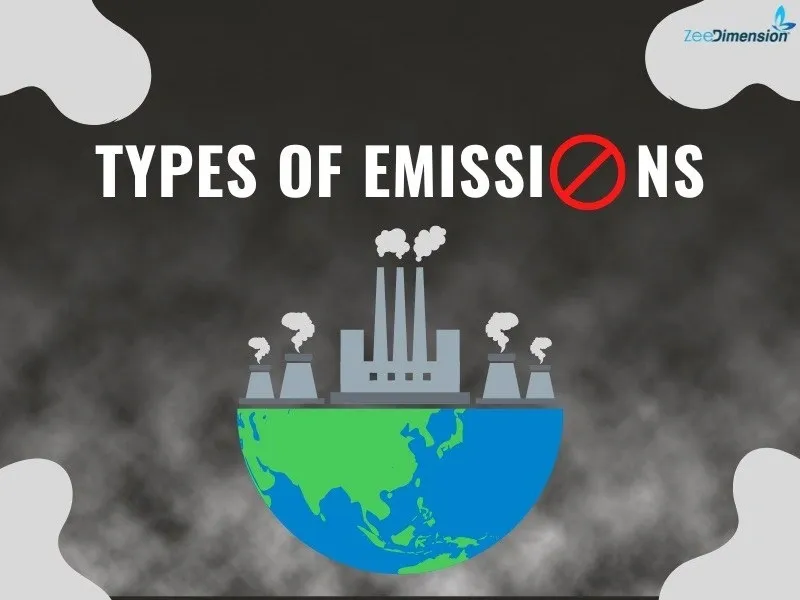
Emissions greatly impact our earth, so it is critical for the many kinds of emissions to be comprehended to be quantified and minimized This blog will explain various emissions, such as carbon dioxide, methane, nitrous oxide, fluorinated gases, sulfur dioxide, particulate matter, black carbon, and volatile organic compounds. By understanding their sources, effects, and mitigation techniques, we may move toward a more sustainable future.
What is the carbon dioxide emissions?
Fossil fuel burning for energy and transportation is a significant source of CO₂ emissions. A coal-fired power plant releases 1,000 tons of CO₂ day, for a yearly total of 365,000 tons. To mitigate this, the annual emissions would have to be offset by planting 12.17 million trees.
What are the emissions of methane?
Major sources of methane (CH₄) emissions include livestock digestion, landfills, and fossil fuel extraction. For instance, a dairy farm with 500 cows produces 40 tons of CH₄ annually. Methane has 25 times the global warming potential (GWP) of CO₂, indicating a major influence. This means 40 tons of CH₄ equals 1,000 tons of CO₂ each year.
What are the nitrous oxide emissions?
Fertilizer applications and industrial processes are significant sources of nitrous oxide (N₂O) emissions. For example, a farm applying 10,000 kg of fertilizer emits 100 kg of N₂O annually, assuming a 1% conversion rate. Nitrous oxide has a global warming potential (GWP) that is 298 times greater than carbon dioxide (CO₂), meaning 100 kg of N₂O is equivalent to 29.8 tons of CO₂ per year.
What are fluorinated gas emissions?
Refrigeration, air conditioning, and industrial activities all emit considerable amounts of fluorinated gases. A refrigeration unit emitting 10 kg of HFC-134a has a GWP 1,430 times higher than carbon dioxide (CO₂), comparable to 14.3 tons of CO₂.
What are sulfur dioxide SO2 emissions?
One of the main sources of sulfur dioxide (SO₂) emissions is the burning of coal and oil for energy. A power plant, for instance, releases 500 tons of SO₂ per year. Every year, 250 tons would be saved if restrictions were put in place to achieve a 50% decrease. Scrubbers may also absorb up to 90% of SO₂ emissions, which greatly reduces the impact on the environment.
What are Particulate Matter (PM) Emissions?
The combustion of biomass, industrial processes, and vehicle exhaust are major sources of particulate matter (PM2.5) emissions. For instance, a plant releases 10 tons of PM2.5 per year. An estimated $50,000 is spent on health care for each ton of these pollutants, which adds up to $500,000 annually.
What is the black emission?
One of the main causes of emissions of black carbon is incomplete burning of biomass and fossil fuels. For instance, a diesel engine produces 365 kilograms of black carbon emissions annually, or 1 kg every day. It is advised to use cleaner fuels or electric engines to lessen this.
What are volatile organic compounds (VOCs)?
Vehicle emissions, solvents, and industrial operations are major sources of volatile organic compounds (VOCs). For instance, a factory releases 2 tons of volatile organic compounds (VOCs) per month, which adds up to 24 tons of emissions per year. VOCs affect air quality and the health of the environment by causing smog and ozone production.
Conclusion
Every action, no matter how small, helps reduce emissions and create a more sustainable future. Understanding how our choices impact the environment is the first step toward making a difference. By working together to measure, reduce, and innovate, we can move toward a healthier planet for future generations. Think about what steps you are taking to reduce emissions. Share your thoughts and let’s inspire each other to keep striving for a greener tomorrow. Every effort counts!







